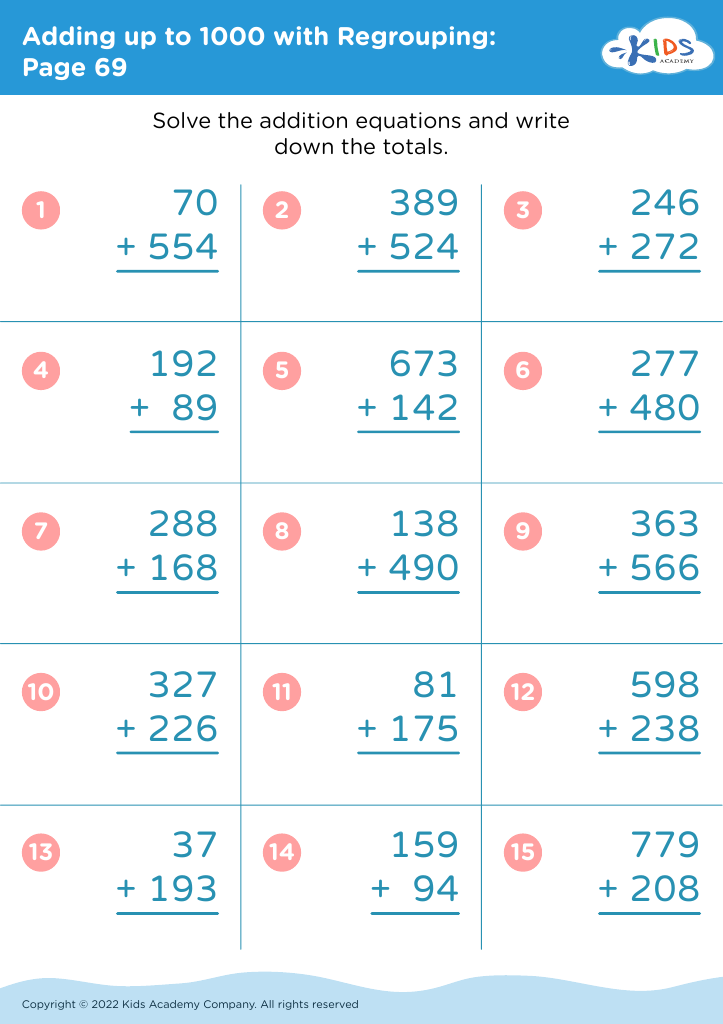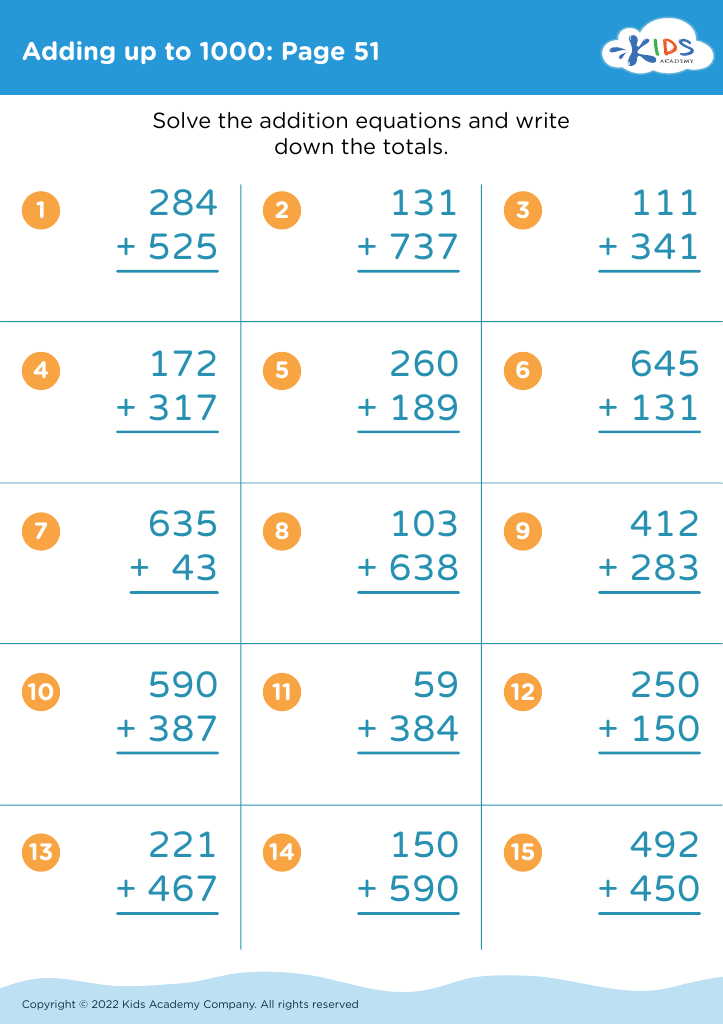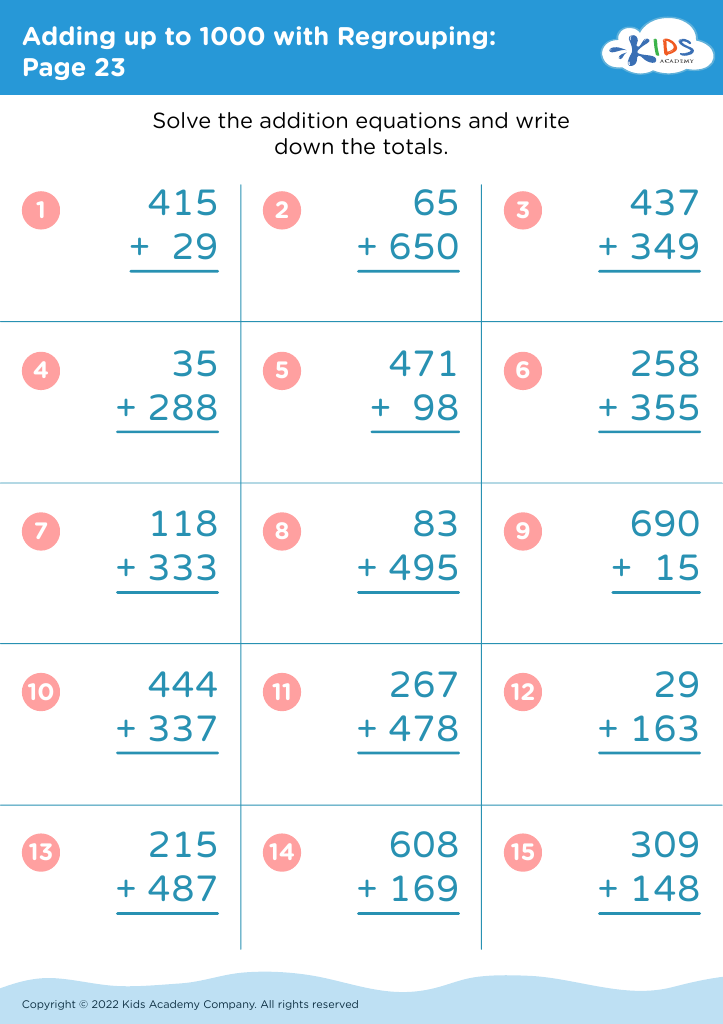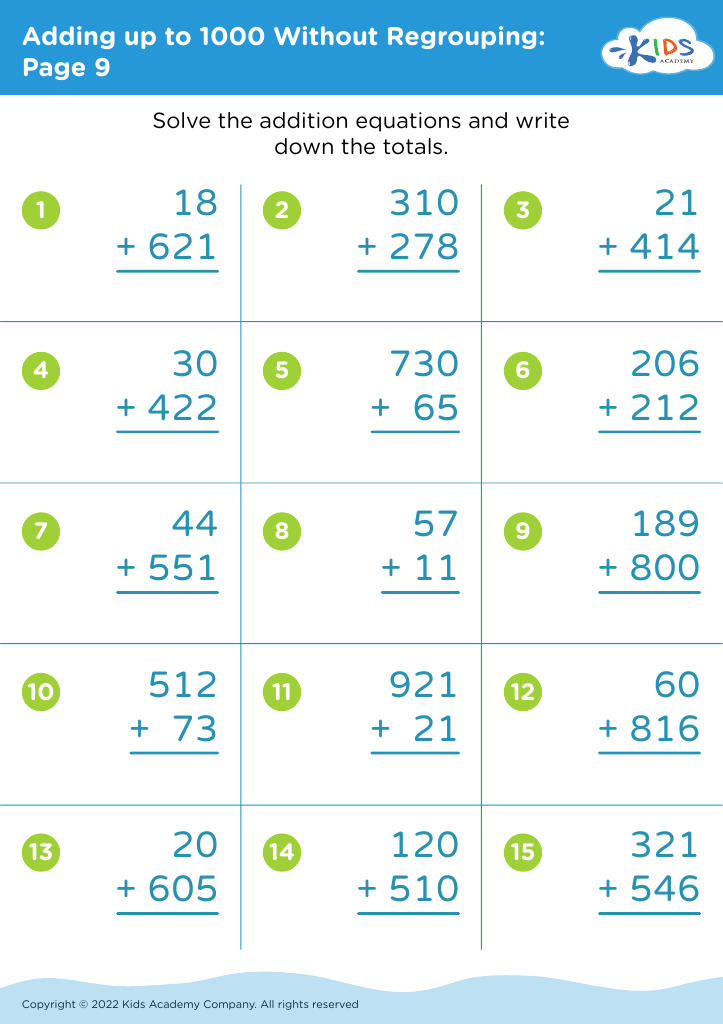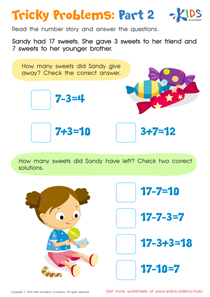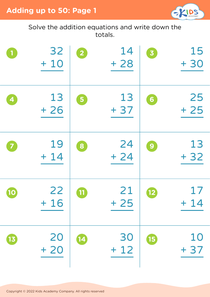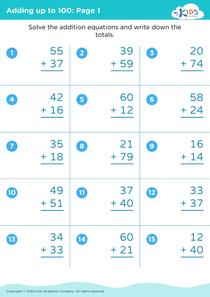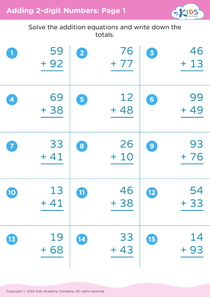Identify shapes Grade 2 Adding up to 1000 Worksheets
4 filtered results
-
From - To
Welcome to our "Identify Shapes Grade 2 Adding Up to 1000 Worksheets" page! Designed specifically for second graders, these engaging worksheets help students enhance their geometry skills while practicing addition up to 1000. Our colorful and interactive worksheets feature various shapes, including circles, squares, triangles, and more. As children identify and categorize each shape, they simultaneously strengthen their mathematical understanding. Perfect for classroom activities or home learning, these worksheets are ideal for promoting critical thinking and problem-solving skills. Download now to help your second grader master shapes and numbers in a fun, creative way!
Identifying shapes and understanding numbers up to 1000 are foundational skills that significantly impact a child's cognitive development. For grade 2 students, learning to identify shapes fosters spatial awareness and critical thinking. Recognizing different shapes helps children understand their environment, enhances their geometrical reasoning, and lays the groundwork for more advanced math concepts.
Similarly, mastering numbers up to 1000 aids in building a firm numerical foundation crucial for future math learning. It promotes number sense, which is essential for basic arithmetic, helping students grasp addition, subtraction, and even multiplication and division as they progress. Moreover, providing children with tools to break large numbers into manageable parts instills confidence and improves their problem-solving skills.
Parents and teachers play a vital role in developing these skills. Engaging children with hands-on activities and real-life examples enhances their learning experience and aligns with their natural curiosities. Furthermore, these competencies encourage collaboration and communication among peers, fostering social skills as students discuss and share their geometric and numerical understanding. Ultimately, nurturing these skills in early education cultivates a love for learning and prepares children for more complex mathematical challenges in the future.
